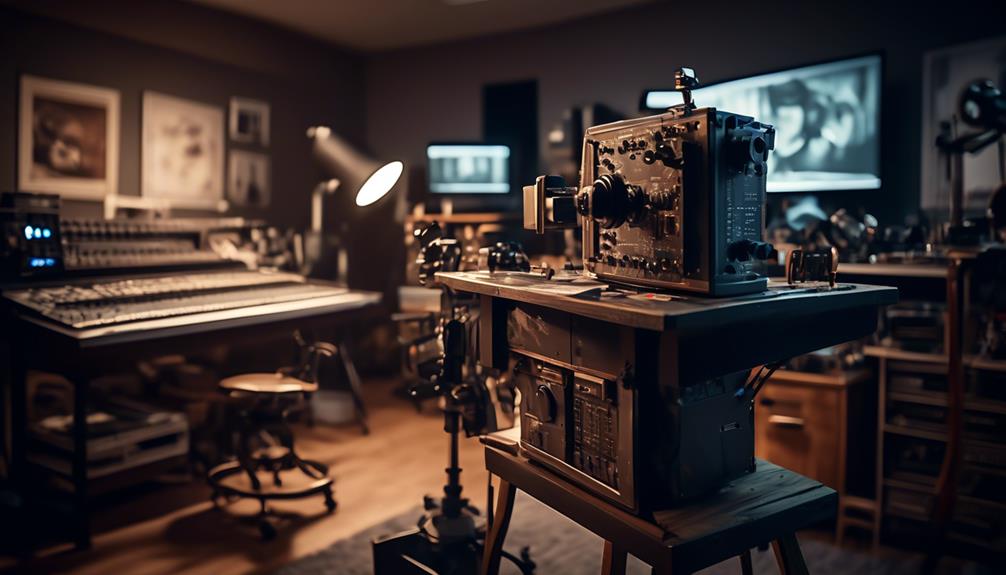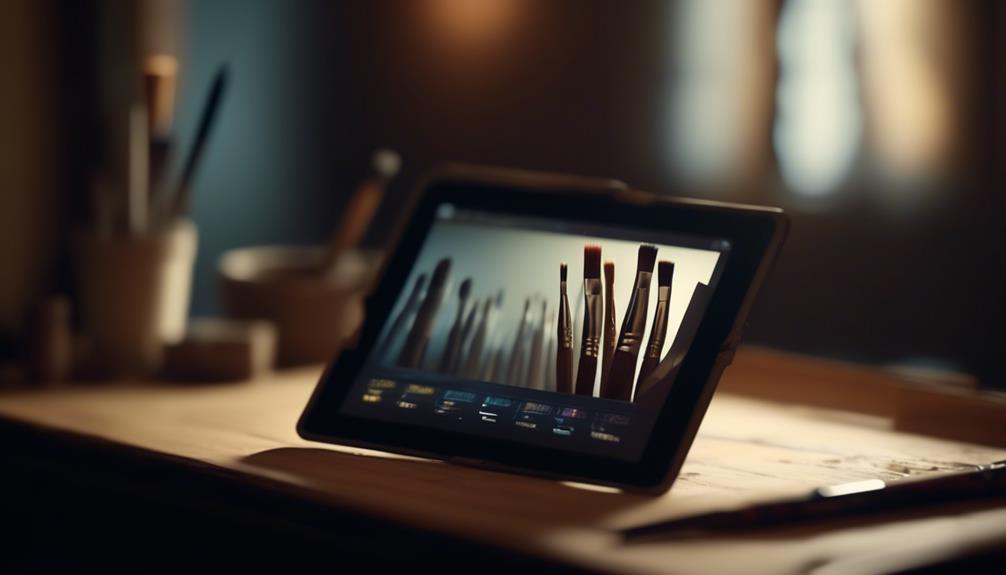Have you noticed the increasing use of AI-generated art in the creative industry? It’s undeniable that the landscape is shifting, and the question on everyone’s mind is whether the creative industry is dying. While some may argue that the industry is facing challenges, there are also compelling reasons to consider the opportunities that lie ahead. As you explore this topic, you’ll find that the impact of evolving technology, changing consumer demands, and industry disruption are all contributing factors that demand our attention.
Table of Contents
ToggleEvolving Technological Landscape

In today’s rapidly evolving technological landscape, creativity is becoming increasingly intertwined with digital tools and platforms. With the proliferation of social media, mobile apps, and digital content creation tools, the way we express creativity has fundamentally transformed. As an individual navigating this landscape, you find yourself constantly seeking innovative ways to bring your ideas to life using these digital mediums. The accessibility of technology has not only democratized creativity but also presented new challenges and opportunities. You may have experienced the pressure to stay updated with the latest digital tools and trends, all while harnessing their potential to unleash your creative vision. This dynamic shift has blurred the lines between traditional and digital forms of expression, urging you to adapt and embrace the digital realm to stay relevant in your creative pursuits. The digital landscape offers a vast array of resources, from online courses to collaborative platforms, empowering you to explore, learn, and collaborate in ways that were previously unimaginable. Embracing these digital tools can enhance your creative process, offering new ways to engage with and captivate your audience.
Impact of Artificial Intelligence
As you navigate the digital landscape, artificial intelligence is revolutionizing the creative industry, reshaping the way ideas are generated and executed. AI is impacting various aspects of the creative process, from aiding in brainstorming sessions to automating certain design tasks. Here’s a snapshot of how AI is influencing the creative industry:
| Impact of AI in the Creative Industry | Examples |
|---|---|
| Ideation and brainstorming | AI algorithms analyzing consumer data to generate ideas for marketing campaigns. |
| Design and visual arts | AI-powered tools creating personalized content based on user preferences. |
| Content creation and curation | AI systems generating news articles, social media posts, and even music compositions. |
Artificial intelligence is not only streamlining the creative process but also challenging traditional notions of creativity. It’s important for professionals in the creative industry to adapt to this technological shift, embracing AI as a tool that can enhance their work rather than replace it. As the creative industry continues to evolve, the symbiotic relationship between human creativity and AI innovation will play a pivotal role in shaping its future.
Shifting Consumer Demands

As a consumer, your preferences are constantly evolving, impacting the products and services that the creative industry offers. The rise of digitalization has also significantly altered the way consumers engage with creative content, further shaping the demands placed on the industry. Understanding these shifts in consumer demands is crucial for the creative industry to adapt and thrive in an ever-changing market landscape.
Changing Consumer Preferences
Consumer preferences are continually evolving, shaping the landscape of the creative industry. As a consumer, you are now more conscious of ethical and sustainable products. This shift has led to a demand for eco-friendly and socially responsible creative content. Furthermore, there is a growing preference for personalized and interactive experiences. As a result, the creative industry is adapting by offering customizable products and immersive, interactive entertainment. Additionally, the rise of digital streaming services has altered how consumers access and engage with creative content. This has prompted the industry to focus on creating original, high-quality digital content to meet the changing consumer behavior. Understanding and responding to these evolving preferences is crucial for the survival and success of the creative industry.
Impact of Digitalization
With shifting consumer demands driven by digitalization, the creative industry faces the challenge of adapting to evolving preferences for sustainable, interactive, and personalized content. Consumers now seek environmentally conscious and socially responsible creative products. This means that the industry must embrace sustainable practices and produce content that reflects these values. Moreover, digitalization has led to an increased desire for interactive experiences. Consumers want to actively engage with content rather than passively consume it. This requires the industry to explore new technologies and innovative storytelling methods. Additionally, personalization has become a key expectation. Consumers want content tailored to their individual preferences and interests. The creative industry must leverage data and technology to deliver customized experiences. Adapting to these shifting demands is crucial for the industry’s survival in the digital age.
Challenges and Opportunities
Now it’s time to consider the challenges and opportunities facing the creative industry. The economic impact on creativity, technological advancements, and changing consumer preferences are crucial factors to explore. These elements present both obstacles and potential pathways for growth in the creative sector.
Economic Impact on Creativity
The economic impact on creativity presents both challenges and opportunities for those involved in the creative industry. As budgets tighten and consumer spending fluctuates, the creative industry faces the challenge of securing funding for projects and sustaining a steady income. However, this environment also fosters opportunities for innovation and resourcefulness. For instance, the shift towards digital platforms has opened up new avenues for reaching audiences and monetizing creative content. Additionally, the demand for authentic and unique experiences provides creatives with the chance to differentiate themselves in the market. Embracing cost-effective technologies and adapting business models to align with changing economic landscapes can lead to sustainable growth. By navigating these challenges and seizing opportunities, the creative industry can thrive amidst economic fluctuations.
Technological Advancements
Embracing technological advancements in the creative industry offers both challenges and opportunities for professionals seeking to adapt to an ever-evolving digital landscape. The table below outlines some key aspects of this dynamic shift.
| Challenges | Opportunities |
|---|---|
| Adapting to new software | Access to global markets |
| Keeping up with trends | Automation of mundane tasks |
| Protecting intellectual property | Collaboration across borders |
| Data security and privacy | Enhanced creative tools |
Navigating these challenges requires continuous learning and flexibility. However, the opportunities presented by technological advancements, such as global reach and automation, can significantly enhance creativity and productivity. By harnessing these advancements, creative professionals can stay at the forefront of innovation and continue to thrive in the ever-changing digital landscape.
Changing Consumer Preferences
Adapting to changing consumer preferences requires creative professionals to stay attuned to evolving trends and embrace new strategies for engaging with their audience. With the rise of social media and digital platforms, consumers now seek authenticity, personalization, and interactive experiences. This shift presents both challenges and opportunities for the creative industry. On one hand, it requires a deep understanding of the target audience, their values, and the ability to anticipate their needs. On the other hand, it opens up avenues for innovative storytelling, immersive content, and co-creation opportunities. Leveraging data analytics and consumer insights can help in tailoring products and experiences to match the evolving preferences, while also allowing for real-time feedback and adaptation. Embracing these changes can lead to stronger connections with the audience and drive the creative industry towards new heights.
Future Prospects for Creatives
Considering the rapidly evolving digital landscape, creatives must continuously explore new avenues for growth and innovation to thrive in the future. Embracing technological advancements is crucial for staying relevant. The rise of virtual and augmented reality, artificial intelligence, and immersive experiences presents both challenges and opportunities. As a creative, you need to adapt and harness these tools to push the boundaries of your work. Collaboration and interdisciplinary skills will also be increasingly valuable. By working with professionals from diverse fields, you can gain fresh perspectives and create more impactful and multidimensional projects.
Furthermore, understanding and leveraging data will be essential. The ability to analyze consumer insights and market trends can inform your creative strategies, ensuring that your work resonates with your audience. Building a strong personal brand and online presence is equally important. Social media and digital platforms offer unprecedented opportunities for reaching global audiences and showcasing your portfolio. Cultivating a strong network and continuously learning and evolving will be the cornerstones of success in the dynamic landscape of the creative industry.
Navigating Industry Disruption

In order to navigate industry disruption, you must harness technological advancements and cultivate interdisciplinary skills to stay ahead in the rapidly evolving creative landscape. Embracing technology is crucial as it can revolutionize the way you create and deliver your work. Moreover, interdisciplinary skills enable you to adapt to changing demands and collaborate across different fields, enhancing your problem-solving abilities and fostering innovation.
To navigate industry disruption effectively, consider the following:
- Embrace Digital Tools: Utilize the latest software, apps, and platforms to streamline your creative processes and reach wider audiences. Whether it’s leveraging AI for design tasks or mastering digital marketing, incorporating digital tools into your workflow can significantly enhance your productivity and impact.
- Continuous Learning: Stay updated with industry trends and continuously upskill in diverse areas such as data analysis, user experience design, or content creation. This adaptability and willingness to learn new skills will equip you to thrive in an ever-changing landscape.
- Networking and Collaboration: Build a strong network within and beyond your industry. Collaborating with professionals from various backgrounds can provide fresh perspectives and open doors to new opportunities, helping you navigate disruptions more effectively.



